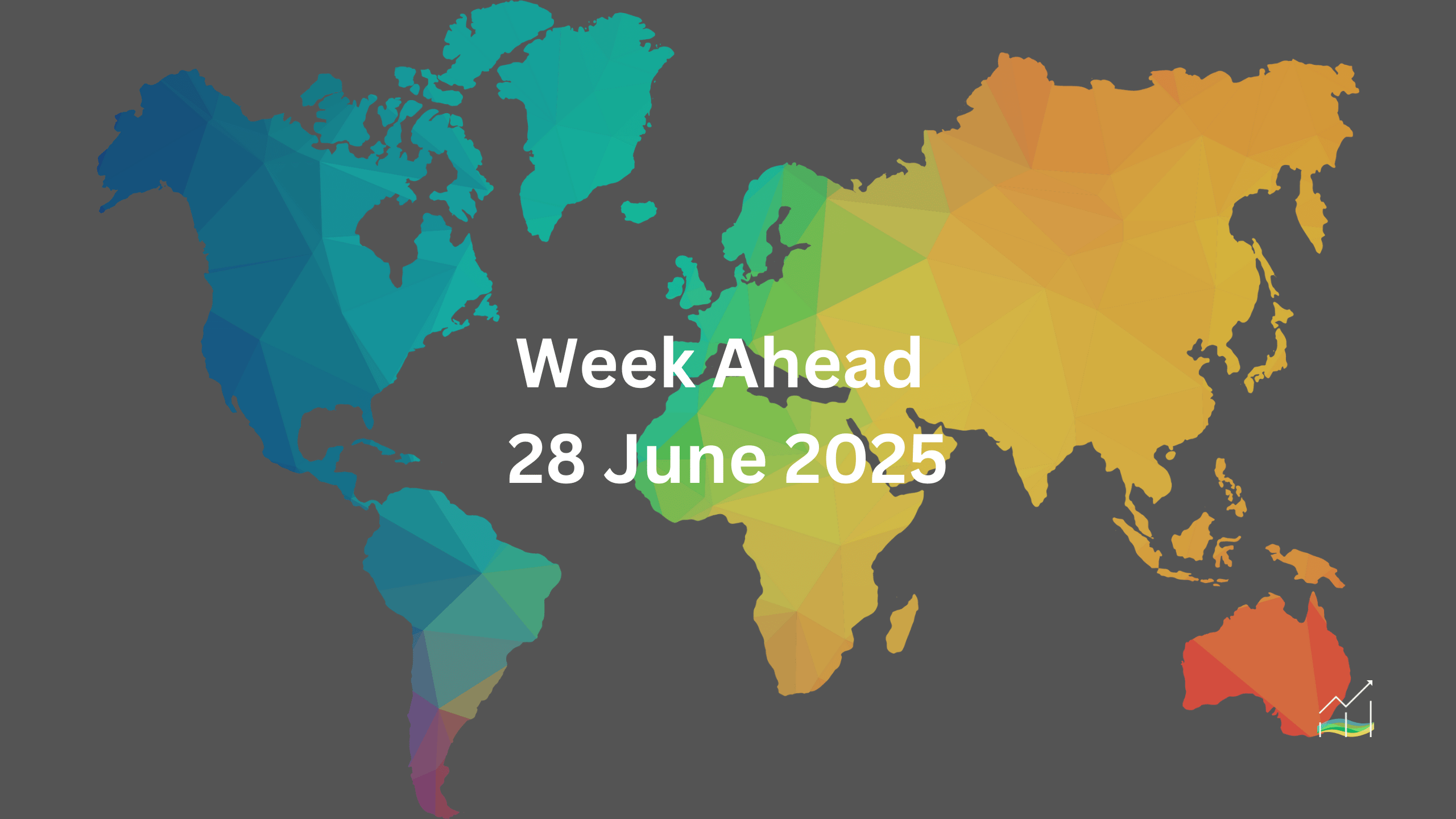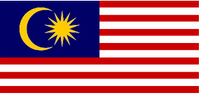28/06/2025 Week Ahead

A Fragile World Faces Slower Growth & Rising Strategic Risks
Key Takeaways:
- Global growth looks set to weaken further, facing structural, geopolitical, and institutional challenges.
- The US faces trade turbulence as tariff postponements end, threatening fragile manufacturing recovery.
- China’s control over rare earths and drone supply chains is reshaping global power balances.
- US consumer weakness, higher tariffs, and political interference could complicate the Federal Reserve’s path.
- Geopolitical risks remain high with renewed conflict in the Middle East and tensions around nuclear non-proliferation.
The second half of 2025 begins on an uneasy footing, marked by a fatigued global economy showing structural weaknesses. Instead of a soft landing, economies face a grinding slowdown against a backdrop of rising geopolitical and institutional strains. The cycle looks weaker and less resilient, challenging policymakers to stabilise growth in a more dangerous world.
Trade policy in the United States is set to add more turbulence. The postponement of so-called reciprocal tariffs is ending, with little progress on new agreements during the 90-day pause. Higher steel and aluminum tariffs, extended to consumer goods, threaten to hit both manufacturers and households. Even if manufacturing expands, it will likely do so through greater automation rather than rehiring, weakening hopes of a broad-based industrial jobs revival. Additional investigations under Section 232 could soon target critical industries from semiconductors to pharmaceuticals, further unsettling global trade flows.
China’s demonstration of its dominance in rare earths and drone manufacturing underscores shifting power dynamics. Despite some easing of restrictions, Beijing retains leverage across key strategic materials, exposing the US to potential supply shocks. This reflects a broader trend of economic weaponisation, as countries use control of supply chains to secure geopolitical advantages. These measures echo earlier trade conflicts and risk further supply disruptions if tensions escalate.
Meanwhile, the Federal Reserve faces its own dilemma. Economic data suggests a sharp loss of momentum, with flat consumption, weak retail sales, and falling industrial output. Inflation risks from higher tariffs and supply disruptions may limit the Fed’s ability to cut rates aggressively, even as political pressure builds. President Trump’s talk of replacing Chair Powell before his term ends has raised concerns about central bank independence, adding another layer of policy uncertainty.
Geopolitically, flashpoints remain acute. Israel’s operations against Iranian proxies have shaken the regional balance, while Iran’s nuclear programme setbacks could spur greater demand for nuclear weapons elsewhere. Russia’s continued war in Ukraine, combined with instability in the Middle East, raises the stakes for non-proliferation and security worldwide.
In short, the global economy is entering the second half of the year facing weaker growth, rising inflation risks, fractured supply chains, and intensifying geopolitical rivalries. These forces are unlikely to resolve quickly, leaving markets vulnerable to further shocks.
United States of America
Overview
The US dollar continues to face poor sentiment, reflected in both futures market positioning and asset manager surveys. Much of the adjustment appears to have already taken place. However, incoming data from the real economy have been disappointing, pointing to a clear loss of momentum. Weekly jobless claims have been rising steadily, with the four-week moving average reaching its highest point since August 2023. Continuing claims are now approaching two million, a level not seen since late 2021.
The June nonfarm payroll report, due on 3 July, is expected to confirm a slowdown in job growth for the second month in a row, with an estimated 110,000 new positions. This would reduce the H1 2025 monthly average to around 122,000, down by about a quarter compared to the same period last year. The unemployment rate is also likely to rise to 4.3 percent, its highest since the pandemic. These developments could lay the groundwork for a Federal Reserve rate cut in September, although there is some risk of a dissent at this month’s meeting.
In addition, the dollar remains vulnerable to trade policy uncertainties. The postponement of the reciprocal tariffs expires on 9 July, which has historically weighed on the currency. While there are indications of a possible short-term extension, the market remains cautious about how this will play out.
Economic Drivers
- Persistent weakness in US dollar sentiment, with futures and asset manager surveys showing a bearish tilt.
- Rising weekly jobless claims, with the four-week average at its highest level since August 2023.
- Continuing jobless claims approaching two million, signalling deeper labour market stress.
- Slower nonfarm payroll growth, expected at around 110,000 in June.
- Unemployment rate likely to increase to 4.3 percent, its highest since the pandemic.
- Possible September rate cut if labour market deterioration persists.
- Uncertainty around tariff policy as postponement of reciprocal tariffs may end or extend beyond 9 July.
Data and Events
- 30 June 2025: FOMC Members Speaks.
- 01 July 2025: Fed Chair Powell Speaks.
- 01 July 2025: ISM Manufacturing PMI.
- 01 July 2025: JOLTS Job Openings.
- 01 July 2025: ISM Manufacturing Prices.
- 02 July 2025: ADP Non-Farm Employment Change.
- 03 July 2025: Average Hourly Earnings.
- 03 July 2025: Non-Farm Employment Change.
- 03 July 2025: Unemployment Rate.
- 03 July 2025: Unemployment Claims.
- 03 July 2025: ISM Services PMI.
Price Action
- Dollar generally weakens when tariffs are threatened or implemented.
- Poor labour market data and softer payroll numbers could add further downside pressure to the greenback.
Key Points:
- US dollar sentiment remains negative.
- Labour market shows clear signs of cooling.
- June payrolls likely weak, with higher unemployment ahead.
- Trade policy uncertainty could maintain volatility.
Australia
Overview
The Australian dollar has shown solid gains, reaching a seven-month high just above 0.6560 in late June. With a rise of about 1.6 percent over June, the currency is up almost 5.6 percent this year, making it the second-best performing G10 currency after the Canadian dollar. Looking ahead, a target near 0.6800 appears reasonable if current trends persist.
The Reserve Bank of Australia began an easing cycle in February and followed up with a rate cut in May, leaving its cash rate at 3.85 percent. Markets are strongly anticipating another rate cut at the 8 July meeting, with the derivatives market pricing in about a 95 percent chance of a move, and likely two more cuts before year-end. This positions the RBA as one of the more aggressive G10 central banks in the second half of 2025. Another cut could also arrive in early 2026.
From a trade perspective, the US-Australia free trade agreement, in place since 2005, continues to underpin bilateral trade. The US maintained a goods surplus of around 18 billion dollars with Australia last year. Although Australia has avoided the “reciprocal tariff” imposed on other partners, it is still subject to a 10 percent universal tariff as well as sector-specific tariffs on steel, aluminum, light vehicles, and parts. In a further geopolitical development, the Trump administration is reviewing the US commitment under the 2021 AUKUS security agreement, with growing risk that it could be modified or even abandoned due to US military priorities.
Economic Drivers
- Australian dollar strength supported by solid year-to-date gains.
- Reserve Bank of Australia easing cycle began in February, with multiple cuts expected through 2025.
- Cash rate currently at 3.85 percent, with another reduction likely at the July meeting.
- Markets expect two more cuts in 2025, and possibly another in early 2026.
- Australia continues benefiting from a long-standing free trade agreement with the United States.
- Exposure to the universal 10 percent US tariff, plus sector-specific tariffs on key industrial goods.
- Geopolitical uncertainty around the AUKUS defence agreement as the US considers changes to its commitment.
Data and Events
- 02 July 2025: Retail Sales.
- 03 July 2025: Goods Trade Balance.
Price Action
- Australian dollar reached a seven-month high above 0.6560 in late June.
- Advanced about 1.6 percent in June, and nearly 5.6 percent for the year.
- Technical target around 0.6800 appears reasonable if current trends continue.
Key Points:
- Australian dollar remains resilient, second strongest in the G10 this year.
- RBA seen among the most aggressive in rate cuts through the second half of 2025.
- Trade relations stable but impacted by sectoral tariffs.
- AUKUS defence agreement under review could introduce future geopolitical risks.
Canada
Overview
The Canadian dollar has strengthened notably against the US dollar since early February, when USD/CAD spiked near 1.48. By mid-June, the pair reached a ten-month low around 1.3540, and despite a brief rebound capped at 1.3800, the overall trend has favoured the Canadian dollar. This strength is largely linked to the broader weakness of the US dollar, with the correlation between the Canadian dollar and the Dollar Index reaching an 18-month high above 0.70.
The Bank of Canada moved quickly to lower rates earlier in the year, which has largely been priced in by markets. However, there is still potential for an additional rate cut later in the year, most likely in the fourth quarter. Some economists warn that the impact of recent US tariffs on Canadian trade may only now be starting to materialise, which could push the Bank of Canada to consider further easing to a terminal rate near 2.25 percent if economic conditions worsen.
At the same time, Canada has introduced a new tariff-quota system aimed at restricting steel imports from countries without trade agreements. In addition, Ottawa has signalled it may raise tariffs on US steel and aluminum on 21 July if ongoing trade discussions with Washington break down.
Economic Drivers
- Strength in the Canadian dollar supported by broad US dollar weakness.
- High correlation between CAD movements and the Dollar Index, around an 18-month high.
- Bank of Canada has front-loaded rate cuts earlier in 2025.
- Potential for an additional rate cut in Q4 if economic contraction deepens.
- Risks from US tariff impacts on Canadian exports.
- New Canadian tariff-quota to restrict steel imports from non-trade-agreement partners.
- Threat of higher tariffs on US steel and aluminum if trade negotiations fail.
Data and Events
- 02 July 2025: Manufacturing PMI.
- 03 July 2025: Trade Balance.
Price Action
- USD/CAD fell from near 1.48 to a ten-month low around 1.3540 by mid-June.
- Short-term rebound capped at 1.3800, with next technical support seen around 1.3400.
Key Points:
- Canadian dollar has benefited from broad US dollar weakness.
- Bank of Canada rate policy largely front-loaded, with a potential final cut later in 2025.
- Trade policy tensions could weigh on the outlook.
- Market focus on Canadian steel tariffs and their impact on cross-border trade.
China
Overview
Beijing has continued to maintain tight control over the yuan’s exchange rate, with trading in June confined to a narrow 0.6 percent range against the US dollar, roughly between 7.1575 and 7.20. The offshore yuan was a bit more volatile, ranging between 7.1525 and 7.2240. Despite these movements, the onshore yuan has only appreciated about 1.75 percent against the dollar so far this year, while the offshore yuan has risen around 2.3 percent. This policy of shadowing the dollar has led to a depreciation of the yuan against most G10 and emerging market currencies.
The People's Bank of China has been more active in adjusting its daily dollar reference rate compared to earlier this year, setting the midpoint lower to manage the dollar’s cap. Still, with the Chinese economy under deflationary pressure and struggling to build momentum, there appears to be little willingness to allow the yuan to appreciate significantly. Authorities are instead likely to focus on moderating the pace of the dollar’s decline rather than reversing it. Additional policy stimulus may be required to help stabilise growth in the months ahead.
Economic Drivers
- Strong central control over the yuan’s exchange rate.
- Onshore yuan modestly higher against the dollar this year, but weaker against most G10 and emerging market currencies.
- People's Bank of China actively managing the dollar reference rate to guide currency movements.
- Limited appetite for further yuan appreciation due to deflationary pressures.
- Potential need for additional stimulus to support the economy’s fragile momentum.
Data and Events
- 30 June 2025: Manufacturing PMI.
- 30 June 2025: Non-Manufacturing PMI.
- 01 July 2025: Caixin Manufacturing PMI.
- 03 July 2025: Caixin Services PMI.
Price Action
- Dollar traded in a narrow range against onshore yuan between 7.1575 and 7.20 during June.
- Offshore yuan moved in a slightly wider band between 7.1525 and 7.2240.
- Yuan has gained only modestly year-to-date against the dollar.
Key Points:
- China’s currency policy remains tightly controlled.
- Modest yuan gains against the dollar contrast with broader weakness versus other currencies.
- Economic fragility may limit appreciation potential.
- Additional stimulus measures could be needed if growth stalls further.
Europe
Overview
The euro was one of the strongest performers among the G10 currencies in June, appreciating by about 3.3 percent for the month and nearly 13.2 percent so far this year. This strength has been supported in part by expectations that the European Central Bank will pause its rate-cutting cycle over the coming months, with the deposit rate now set at 2.0 percent, slightly above the estimated neutral level. Market pricing suggests about an 85 percent chance of another rate cut later this year, but for now, policymakers appear inclined to hold steady.
Despite the currency’s strength, the eurozone economy has shown clear signs of slowing after a solid expansion of 0.6 percent quarter over quarter in the first quarter, the best performance since mid-2022. However, current projections indicate the region likely stagnated in the second quarter, with only a marginal improvement expected for the third quarter. Rising oil prices could potentially lift inflation in the eurozone, which in turn would push down real interest rates. If these trends hold, the euro could see further upside, possibly reaching 1.20 against the dollar by year-end, which might even prove to be a cautious estimate.
Economic Drivers
- Euro strength supported by expectations of a pause in ECB rate cuts.
- Deposit rate currently at 2.0 percent, slightly above neutral estimates.
- Market pricing about an 85 percent probability of another ECB rate cut later in 2025.
- Economic growth slowing after a strong first-quarter expansion.
- Second-quarter growth forecast to stagnate, with only minor recovery expected in Q3.
- Higher oil prices could push eurozone inflation upward and lower real rates.
Data and Events
- 30 June 2025: German Retail Sales.
- 30 June 2025: German & Italian Prelim CPI.
- 01 July 2025: ECB President Lagarde Speaks.
- 01 July 2025: Final Manufacturing PMI.
- 01 July 2025: CPI Flash Estimate.
- 02 July 2025: Unemployment Rate.
- 02 July 2025: ECB President Lagarde Speaks.
- 03 July 2025: Final Services PMI.
- 03 July 2025: ECB Monetary Policy Meeting Accounts.
- 04 July 2025: PPI.
Price Action
- Euro gained about 3.3 percent in June, upwards almost 13.2 percent year to date.
- Potential for the euro to move toward 1.20 against the dollar by year-end if trends persist.
Key Points:
- Euro among the strongest G10 currencies this year.
- ECB policy pause supports current momentum.
- Eurozone growth losing pace after strong Q1.
- Higher oil prices could influence inflation and real rates.
Japan
Overview
The Japanese yen was the only G10 currency to weaken against the dollar in June, slipping by roughly 0.55 percent. Despite this relatively minor loss, the yen has struggled to regain broader momentum, reflecting persistent doubts about the Bank of Japan’s ability to normalise policy. The Japanese economy is likely to have shown only modest growth in the second quarter after contracting at an annualised pace of 0.2 percent in the first quarter.
The US tariffs on autos present a notable risk, given that the sector represents around 10 percent of Japan’s GDP and employs over 8 percent of its workforce. These pressures have contributed to a more cautious tone from the Bank of Japan, while the swaps market has pared back expectations for future rate increases. Meanwhile, the BOJ has announced it will slow the run-off of its maturing bond holdings from the next fiscal year, and the Ministry of Finance plans to shift issuance from long-dated bonds to shorter-term bills to ease pressure on yields.
Political developments could also weigh on confidence. Japan will hold elections for half of the House of Councillors on 19 July, and a poor result for the Liberal Democrats could open the door to a leadership challenge against Prime Minister Ishiba later this year. Additionally, a sharp rise in rice prices, which have more than doubled this year and added around 0.6 percent to inflation, has put the spotlight on agricultural minister Shinjiro Koizumi, whose popularity could rise if he succeeds in addressing the issue.
Economic Drivers
- Minor yen weakness in June while other G10 currencies strengthened.
- Japanese economy showing only modest Q2 growth after Q1 contraction.
- US auto tariffs threaten a key sector of Japan’s economy.
- Bank of Japan shifting to a more cautious tone on policy normalisation.
- BOJ plans to slow reduction of bond holdings from April 2026.
- Ministry of Finance adjusting bond issuance to relieve yield curve pressure.
- Upcoming upper house election with potential consequences for political stability.
- Rice price surge boosting inflation and raising public attention.
Data and Events
- 30 June 2025: Prelim Industrial Production.
- 30 June 2025: Housing Starts.
- 01 July 2025: Final Manufacturing PMI.
- 01 July 2025: Consumer Confidence.
- 01 July 2025: BOJ Gov Ueda Speaks.
- 04 July 2025: Household Spending.
Price Action
- Yen fell around 0.55 percent against the dollar in June.
- Exchange rate correlation with US 10-year yields rebounded to about 0.50 from a two-year low near 0.10 in May.
Key Points:
- Yen underperformed among G10 currencies in June.
- Japanese growth outlook remains fragile, weighed by US tariffs.
- BOJ seen maintaining cautious policy stance.
- Political and inflation-related developments could shape market sentiment.
United Kingdom
Overview
Sterling has continued to strengthen against the US dollar, advancing for the fifth consecutive month, which matches its longest rally since 2003 and 2004. Over the first half of this year, the currency has gained about 9.6 percent, reflecting broad US dollar weakness rather than fundamental domestic strength. Beneath this performance, there are clear signs of economic vulnerability in the UK.
After leading the G7 with a 0.7 percent quarterly growth rate in the first quarter, the UK economy slowed notably in the second quarter. The labour market is showing strain, with the number of employees on payrolls dropping by nearly 200,000 in the three months through May, compared with a decline of about 51,000 in the previous three-month period. GDP fell by 0.3 percent in April, which was worse than expected, while manufacturing output recorded its third decline in four months. The services sector also contracted by 0.4 percent, matching its weakest reading since late 2022.
The Bank of England left its policy rate unchanged at 4.25 percent at the last meeting, but a divided vote on the Monetary Policy Committee has increased market confidence that a rate cut could arrive as early as the next meeting in August. Another reduction is also anticipated in the fourth quarter. Despite current headwinds, market participants see potential for sterling to rise further over the next six to twelve months, targeting the 1.4000 to 1.4200 range, while the OECD’s purchasing power estimate suggests fair value closer to 1.47.
Economic Drivers
- Five-month sterling rally supported by broad US dollar weakness.
- UK economy losing momentum after strong first-quarter growth.
- Labour market showing accelerating weakness with falling payroll numbers.
- Negative April GDP and declining industrial and services activity.
- Bank of England holding rates steady at 4.25 percent, but divided votes raise expectations of a cut.
- OECD fair-value estimate for sterling stands around 1.47.
Data and Events
- 30 June 2025: Current Account.
- 30 June 2025: Final GDP.
- 01 July 2025: Final Manufacturing PMI.
- 01 July 2025: BOE Gov Bailey Speaks.
- 03 July 2025: Final Services PMI.
- 04 July 2025: Construction PMI.
- 05 July 2025: BOE Gov Bailey Speaks.
Price Action
- Sterling advanced for five straight months, gaining about 9.6 percent year to date.
- Market targets in the 1.4000 to 1.4200 range over the next six to twelve months.
- Fair-value estimates point closer to 1.47 based on purchasing power parity.
Key Points:
- Sterling’s rally masks growing domestic economic weaknesses.
- UK growth momentum fading with clear labour market strain.
- Bank of England likely to cut rates in coming months.
- Markets eye higher sterling targets if global dollar softness persists.
© 2025 SKONE Enterprise (003319453-V). All rights reserved.
The content on this site is for informational purposes only and does not constitute financial advice.


